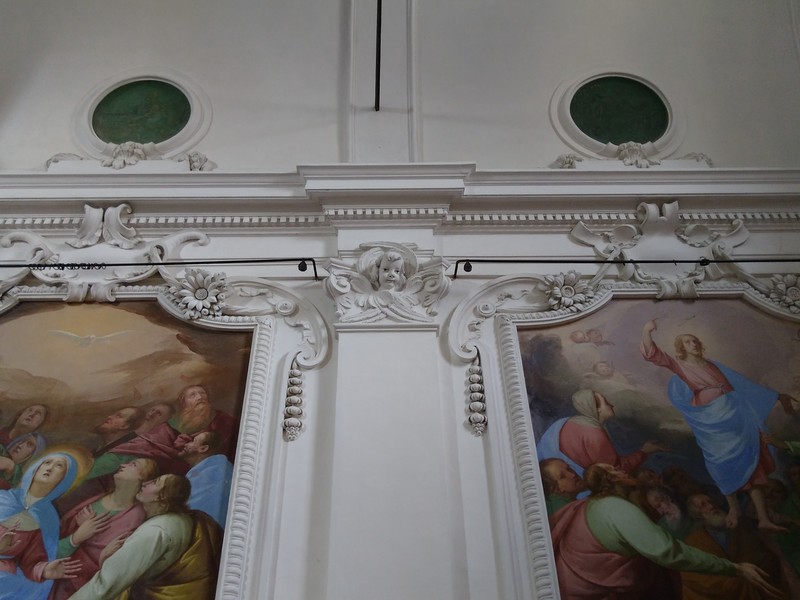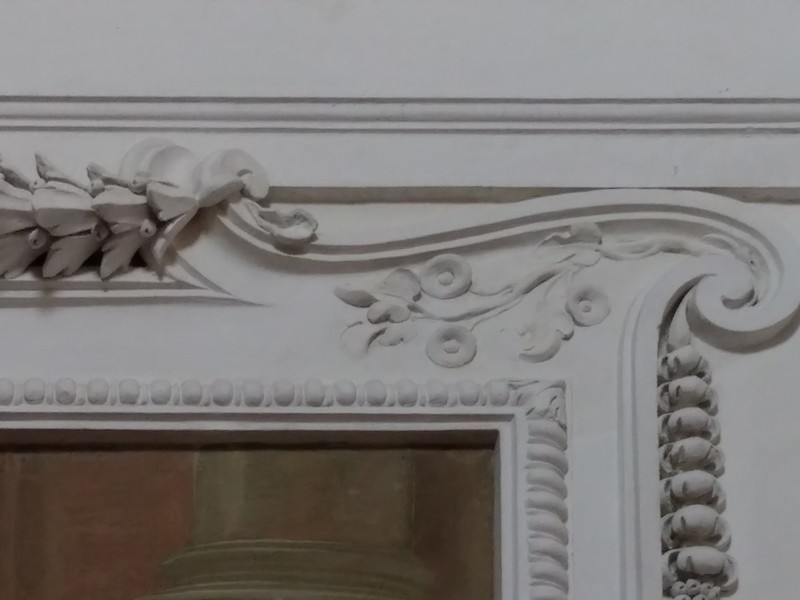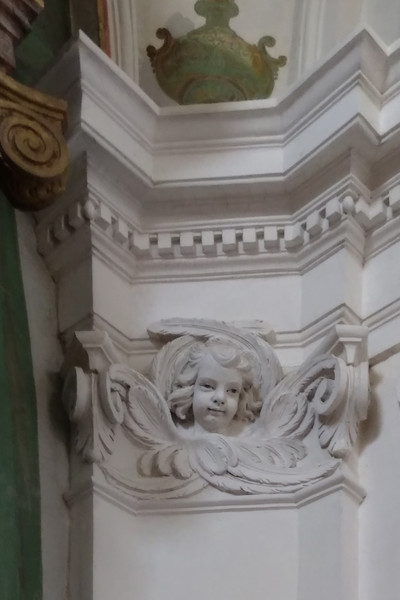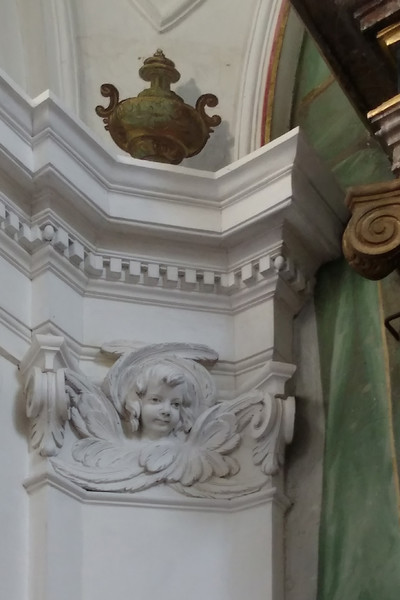Interior
In the frames for frescos of the nave and chapel, the repetitive elements were made using moulds, while the festooned flowers and leaves were modelled freehand (Fig. 1, 2, 3). The stuccatore composed the entire frame quickly, with only one layer of stucco. This is evidenced by the narrow but deeply penetrating shrinkage cracks, extending through both the finish and body layers and into rough plaster. This aspect could be due to the absence of additives such as hydraulic lime or gypsum, which would have inhibited such cracking. The choice of technique was unusual for this type of frame, much more commonly executed in two stages: definition of the base form using a template, and when this was partially hardened, application of the moulds, so as not to deform the more fragile parts, such as edges and corners.
Although the faces of the cherubs differ in their positions, hair curls, and the detailing executed with metal and wooden spatulas, they were formed using the same mould (Fig. 4, 5).
Here, the work in stucco suggests a guiding desire to imitate the decorative style of Borromini, but also a certain lack of familiarity with the material, and even a good dose of improvisation. We could possibly suppose that the artisan would have been an inexperienced worker instructed by Beccaria, or that the architect himself tried his hand in the role.









